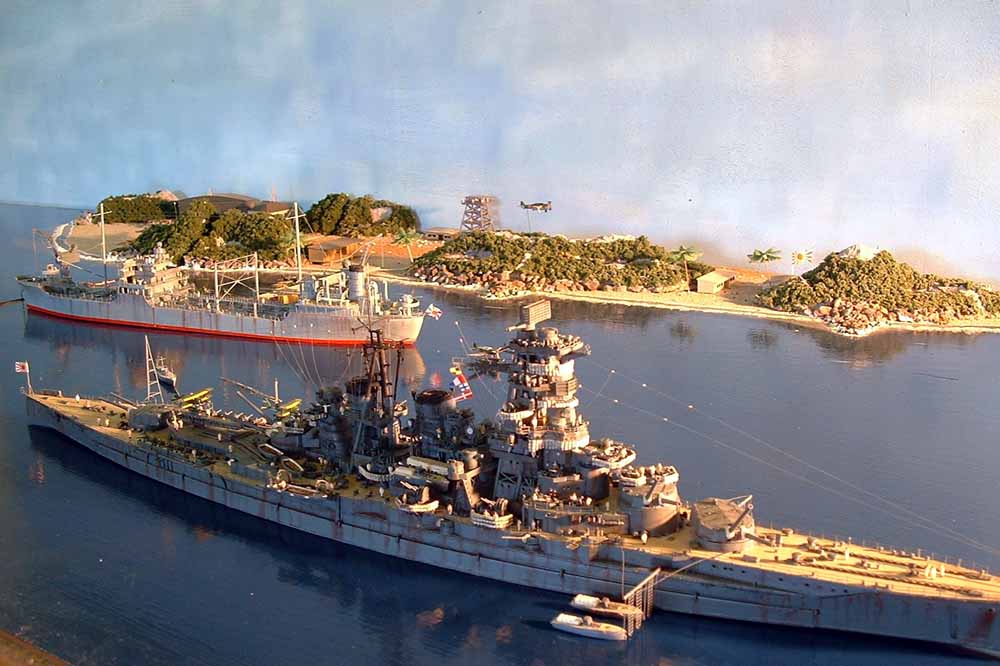by Kym Knight

1/350 IJN Kongo, September 1944 (Fujimi)

This was the second of the new breed of Japanese battleship kits (following the Nagato) to be released and sparked its own controversy over the incorrectly shaped casemates. Design faults aside, the kit and its photo-etch went together beautifully. This was also my first shot at waterlining a full hull, and the result was not what I was expecting. It was well after cutting and mating the hull to it's base plate and fitting the deck that I noticed that the whole assembly had 'banana'd (lifting at each end). It's a problem that I have now cured on other builds by adding a wooden stiffener the entire length of the base, but this one will have to be fixed permanently to the sea base at a later date.
Kongo, first of a class of four 26,230 ton battlecruisers, was built at Barrow-in-Furness, England. The last major Japanese warship to be constructed abroad, she was completed in August 1913. She was active during World War I and afterwards as one of the fastest units of Japan's battle fleet. In 1929-31, Kongo was modernized at Yokosuka Dockyard, and was thereafter rated as a battleship. She was again modernized at Yokosuka in 1936-37, receiving new machinery and a lengthened hull to increase her speed to over thirty knots. This high speed, plus their heavy guns, made Kongo and her sisters uniquely valuable warships, and they were heavily used in World War II combat operations.
After the 20 October 1944 invasion of Leyte, Kongo sortied with the rest of the Japanese fleet to make a counter-attack. This resulted in the great Battle of Leyte Gulf, an action that essentially destroyed Japan's Navy as a major fighting force. As part of the Center Force, Kongo survived a submarine attack on 23 October, carrier air attacks in the Sibuyan Sea the next day, the Battle off Samar against U.S. escort carriers and destroyers on 25 October and an Air Force high-level bombing attack as she withdrew from the battle area on the 26th. However, her luck ran out a month later. On 21 November 1944, soon after passing through the Formosa Strait en route to Japan, she was torpedoed by the U.S. submarine Sealion. The resulting fires apparently were uncontrollable, as Kongo blew up and quickly sank a few hours after she was hit. She was the only battleship sunk by submarine attack during the Pacific War.
Source: Naval Historical Center
